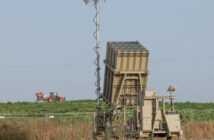Anzacs, Empires & Israel’s Restoration 1798-1948
Napoleon’s invasion of the Eastern Mediterranean in 1798 provoked a battle between the European empires for control of that strategic region, placed as it was between Europe and the wealth of the Far East, especially India.
This battle also resurrected Jewish hopes of a return to their ancient homeland – the Land of Israel, a hope strongly supported by countless Bible-believing Christians.
It witnessed too the active involvement of soldiers from Australia and New Zealand (Anzacs) in the region – at Gallipoli in Turkey, in the Sinai, at Gaza, Beersheba, Jerusalem and Jericho in Turkish Palestine, in Syria, in Transjordan, at Tobruk in Libya, in Greece, Crete and at El Alamein in Egypt.
Their contribution, alongside other soldiers of the British Empire, played a significant role in enabling Israel’s restoration, as part of Britain’s imperial ambitions. But Britain’s role ended when the State of Israel was founded in May 1948 – 150 years after Napoleon’s invasion.
Anzacs and Israel,
A Significant Connection
This book describes the significant contribution of the Anzacs in the establishment of modern Israel as a result of the Gallipoli campaign and other critically-important battles fought in the Eastern Mediterranean during both World Wars, such as the Charge of the 4th Light Horse Brigade at Beersheba, and the famous battles of Tobruk and El Alamein
Journey to Beersheba,
The Story behind the Charge of the Light Horse in 1917 and the re-enactment in 2007
That initial charge on 31 October 1917 was part of the Battle of Beersheba in which British, New Zealand and Australian soldiers defeated the Turkish Army.
On that same day the British War Cabinet in London agreed to establish a Jewish National Home in the land of Israel – once the land had been captured from the Turks.
This book reveals the events leading up to what transpired in Beersheba and London on 31 October 1917. The author, Kelvin Crombie, is an Australian, who was the guide for the Australian Light Horse Association re-enactment group.
The book also details how he first received an interest in these subjects while growing up in the Australian bush, and how as a young man he went to live in Israel.
Woven into his story are numerous events and personalities, which included him becoming a local guide at Christ Church in the Old City of Jerusalem, and conducting his first In Step with Allenby and the Light Horse ‘tour’ in 1988.
As the historical tapestry was wonderfully displayed in the events of 31 October 1917, the tapestry in his own personal journey to Beersheba was in many ways completed through the events in Beersheba on 31 October 2007.
El Alamein, Halting an Impending Holocaust in the Middle East
Between July and November 1942 the future of the Middle East lay in the balance as German and Italian soldiers fought against soldiers from Britain, Australia, New Zealand, South Africa, India, Poland and Free French and other smaller entities.
As the German thrust to the Suez Canal was thwarted outside the small Libyan town of Tobruk in 1941, now Field Marshal Rommel’s new move towards the most coveted piece of real estate in the world was blocked near a small Egyptian location name El Alamein.
There was, however, something much bigger at stake here than a mere military battle – the very survival of over half a million Jewish people, most of whom lived in British Mandated Palestine.
In January 1942 the Nazi leadership declared its intentions to annihilate all eleven million Jewish people in Europe. Nearly a million had already been murdered, mostly by murder squads known as Einsatzgruppen.
Then in July 1942, the Nazi leadership ordered the dispatch to the Middle East of a specialised SS murder squad – The Einsatzkommando Egypt – which was to enlist local collaborators to help fulfill their allotted task.
This book looks at the Middle East campaign of 1940-1942 and how the Allied victory which culminated at El Alamein in November 1942 thwarted both the military objectives of the German-led army to capture the Suez Canal, and the possibility of the Holocaust entering into the Middle East.
It also looks at the relationship between the Arab nationalist movement and its main spokesman, Haj Amin el-Husseini (the Mufti of Jerusalem), with Hitler and Nazi Germany.
Kelvin himself, holding the Montgomery Bible, a Bible given by the Jewish leadership which was presented to Field Marshal Montgomery as an official gift of gratitude for his role in saving the Jewish community in Palestine from the impending conquest by the German-led forces commanded by General Rommel, post El Alamein victory in 1942.






